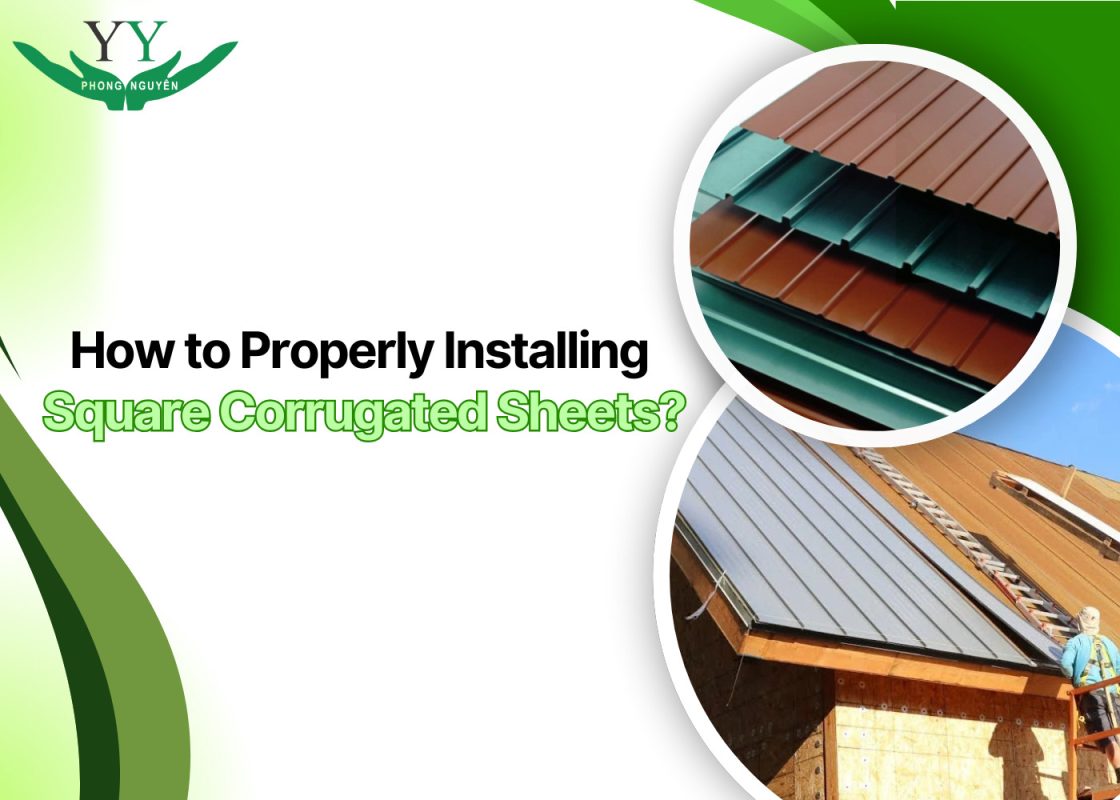Installing square corrugated sheets is an important task in construction, especially for projects that require high durability and resistance to weather conditions. However, to achieve optimal performance, the installation process must follow correct techniques and ensure safety for both workers and the structure. In this article, Phong Nguyen will guide you through the detailed process of installing square corrugated sheets correctly and highlight essential safety considerations.
What are square corrugated sheets?
Square corrugated sheets are a type of sheet metal with a square or box wave pattern, typically made from galvanized steel or stainless steel. The key feature of square wave roofing is its evenly spaced square wave grooves, which enhance its mechanical strength and ability to withstand weather elements such as rain, sun, and wind.
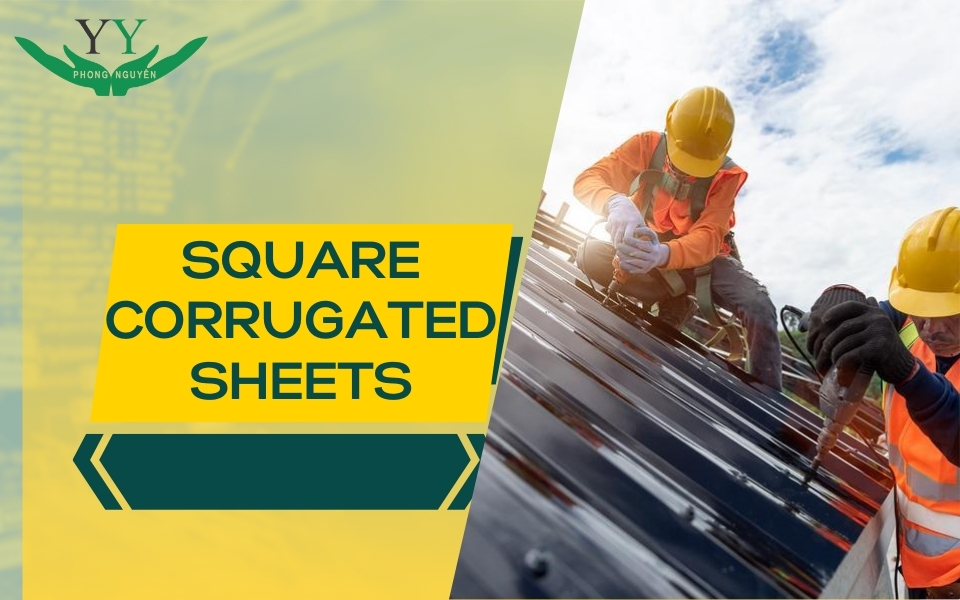
Common applications of square corrugated sheets include covering roofs of buildings such as factories, warehouses, residential houses, and public facilities. This material has excellent corrosion resistance and can withstand extreme weather, particularly in areas with high humidity or frequent rainfall.
Learn More: What Is Square Corrugated Sheets? Which Type Should You Choose?
Reasons to choose square corrugated sheets
Square corrugated sheets are an ideal choice for many construction projects due to their high durability and excellent adaptability to the environment. With their corrosion-resistant coating and solid structure, square corrugated sheets can withstand harsh weather conditions, thereby extending the lifespan of roofs, walls, or industrial buildings. It is a sustainable solution for both residential and industrial projects.
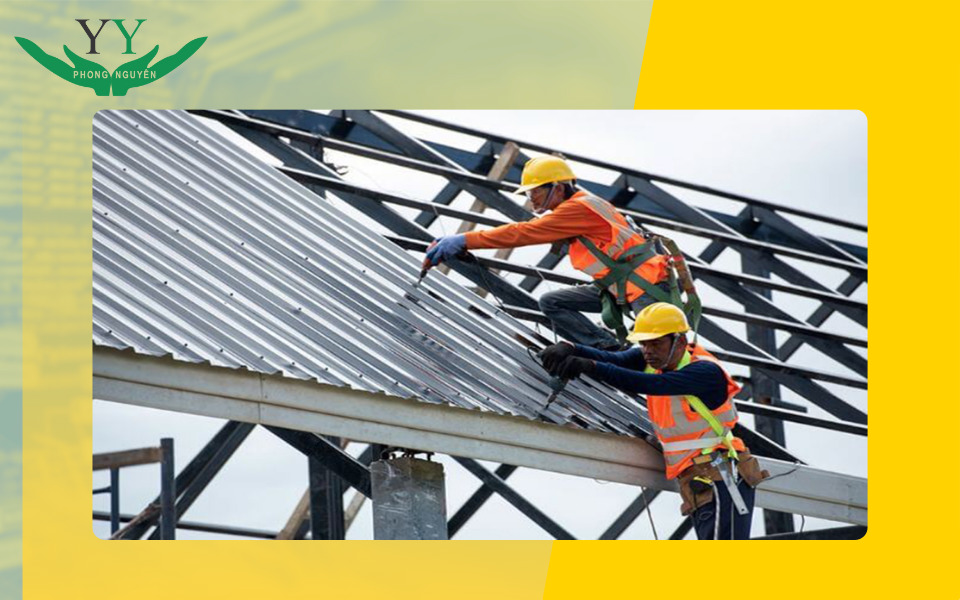
Not only are square corrugated sheets durable, but they also offer cost-effective savings. Compared to materials like tiles or concrete, they are affordable yet provide excellent insulation and noise reduction. Especially with high-quality sheets, the interior space remains cool, quiet, and comfortable, even in rainy and windy conditions.
Preparation before Installing square corrugated sheets
Before starting the installation of square corrugated sheets, thorough preparation is essential to ensure the process runs smoothly, accurately, and safely. Below are the basic preparation steps before roofing with square corrugated sheets:
Check the roof frame
The roof frame is the foundation for installing square corrugated sheets. Before installing the sheets, you need to carefully inspect the roof structure, beams, and related components.
-
Check the flatness and slope: The roof should have a slope of at least 10 to 15 degrees to allow rainwater to drain quickly, preventing water from pooling on the roof.
-
Ensure the stability of the frame: The roof frame must be securely installed and stable, with no looseness or misalignment in the structure.
-
Check the spacing between purlins: The spacing between the purlins must be even and suitable for the size of the square wave sheets you intend to use. This ensures the stability of the roofing sheets once installed.

Prepare the materials
You need to prepare all the necessary materials for the installation of square corrugated sheets. Some of the main materials include
-
Square corrugated sheets: Choose high-quality sheets that meet the project requirements. Inspect the thickness, color, and quality of the sheets.
-
Screws and nails: Use specialized screws and nails to fasten the sheets onto the roof frame. Select screws with rubber washers to prevent water leakage through the joints.
-
Sealant gaskets: Sealant gaskets help create a tight seal between sheets, preventing rainwater from seeping through.
-
Silicone sealant: Silicone sealant provides adhesive properties and helps seal the joints between sheets, increasing durability and preventing leaks.
-
Drill, hammer, measuring tape: These tools are essential for drilling, nailing, and accurately measuring during the installation process.
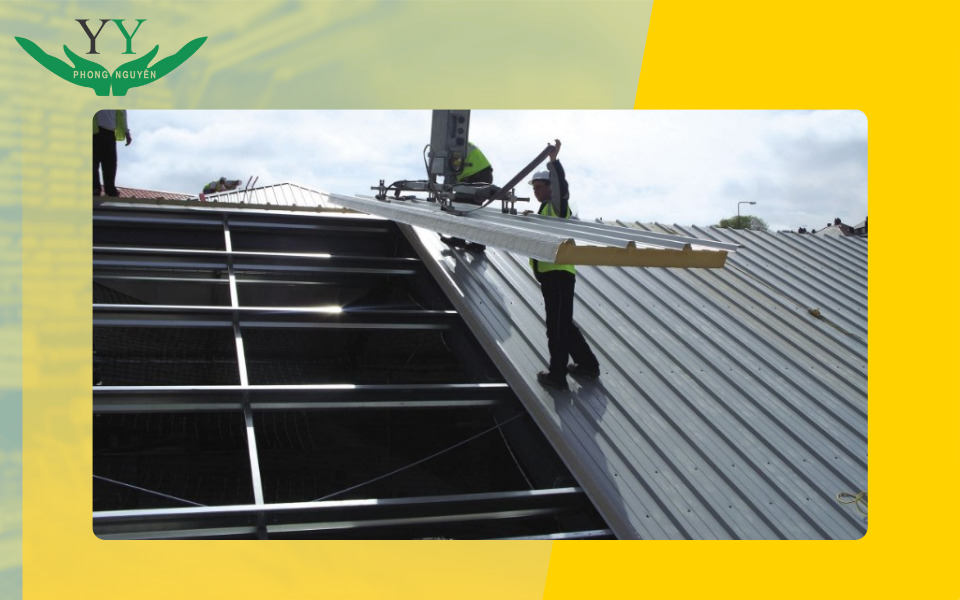
Safety gear
Installing square corrugated sheets involves certain risks, especially when working at heights. To ensure safety, workers should be equipped with the appropriate safety gear, such as helmets for head protection, safety shoes to avoid injury from sharp objects on the floor, and gloves to prevent cuts when handling the sheets and tools.
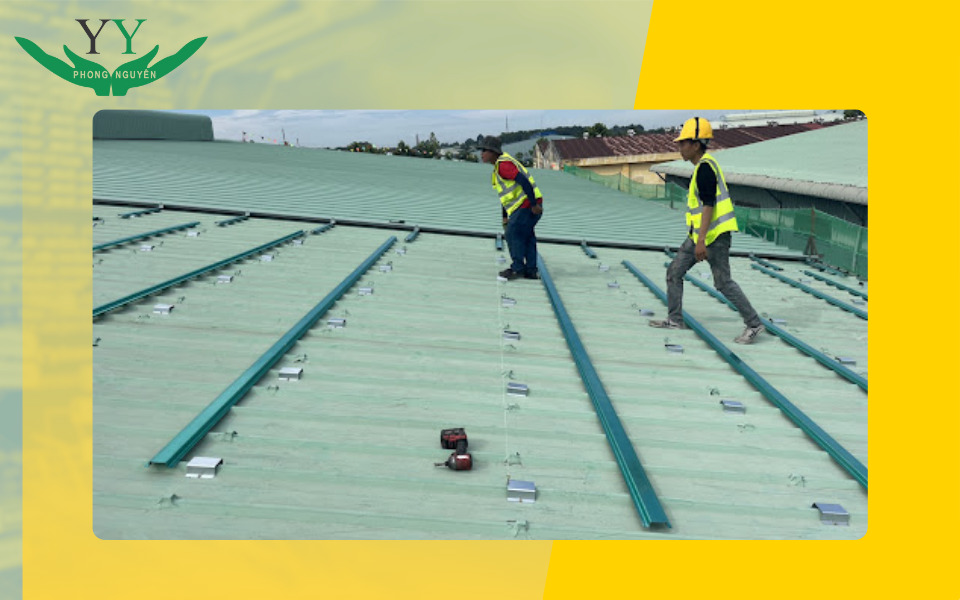
Additionally, using safety goggles is essential to protect the eyes from dust, debris, or sparks during drilling and cutting. Proper use of safety gear not only minimizes the risk of workplace accidents but also enhances the efficiency of the installation process and the quality of the work.
Ensure appropriate weather conditions
The installation of square corrugated sheets should be carried out on dry days to avoid the sheets getting wet, which would reduce the adhesive strength of the silicone sealant or waterproofing gaskets. Additionally, installation should be absolutely avoided during strong winds, as this poses a danger to workers and can affect the accuracy and quality of the installation.
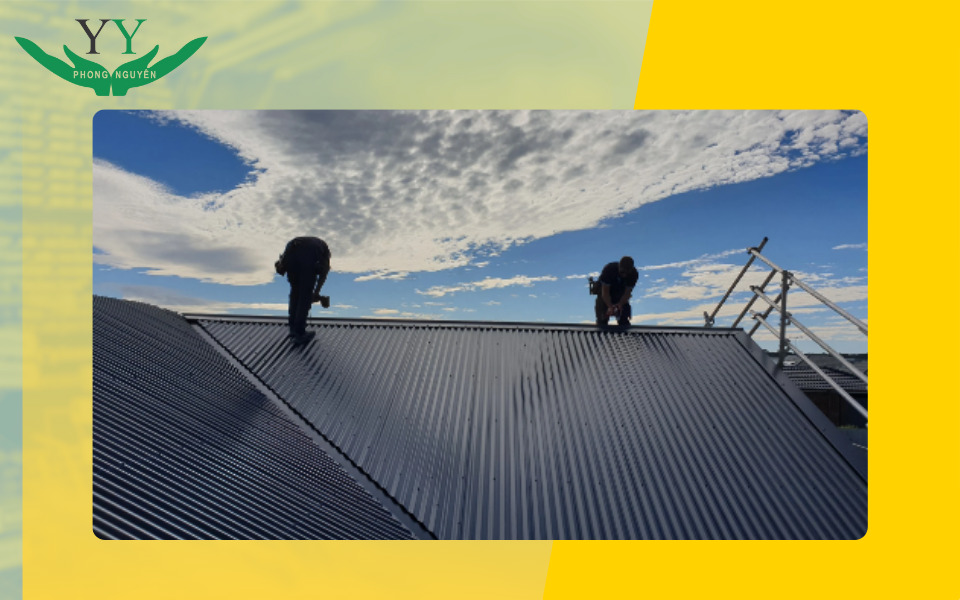
Plan and measure accurately
Before starting the installation, make sure to measure the roof area and calculate the required length and width of the sheets to minimize errors during cutting and installation. Creating a detailed plan, including the sequence of steps for installation, such as installing edge trims, placing the roofing sheets, securing the sheets, and installing ridge covers, will help the process run smoothly, save time, and improve work efficiency.
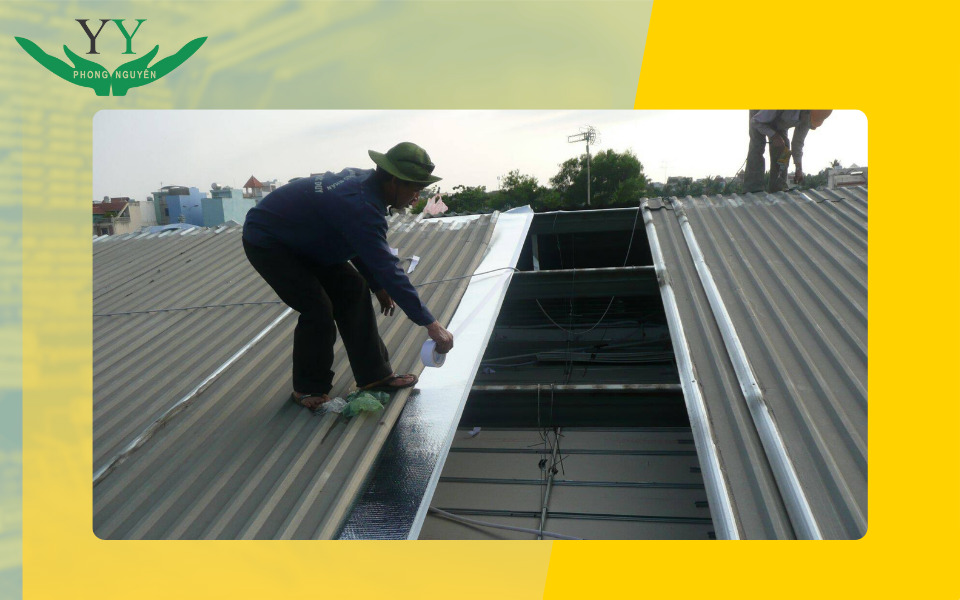
How to install square corrugated sheets correctly
Installing square corrugated sheets requires precision and high technical skill to ensure the roof’s durability and the safety of the structure. Once you have prepared all materials and tools, follow the steps outlined below:
Step 1: Install the edge trims
After completing the frame and purlins, the next step is to install the edge trims around the roof. These trims include the edge and eaves sheets that seal the roof’s perimeter, enhancing aesthetics and preventing rainwater from seeping inside. When installing, use nails with a diameter of about 0.6 cm to securely fasten them to the roof.
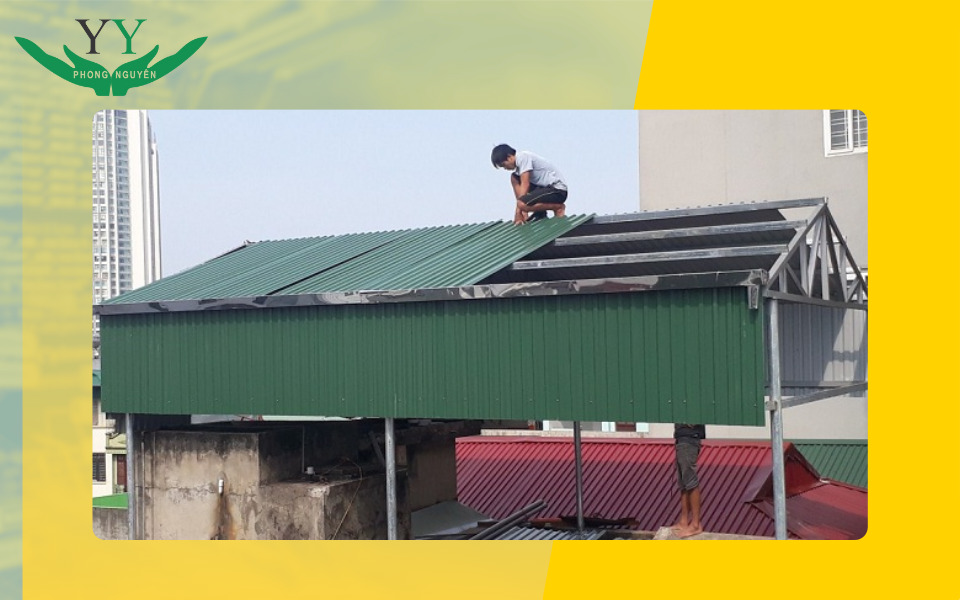
If the roof includes a gutter, ensure that the edge trims are placed overlapping the gutter’s edges to direct the rainwater into the gutter, preventing overflow or leaks onto the walls or floors below.
Step 2: Install the square wave sheets
The next step is to install the square corrugated sheets. Start from the highest point of the roof and move down towards the roof’s edge.
-
Place the first sheet: Position the first sheet so that its edge extends at least 2 cm beyond the roof edge. Then, use screws with rubber washers to secure the sheet onto the frame.
-
Screw spacing: Ensure that the spacing between the screws is 30 cm to keep the roofing sheets firmly in place.
-
Continue installing the sheets: Proceed to install the next sheets, ensuring that they overlap by at least 2.5 cm. Repeat this process until the entire roof area is covered.
-
Use silicone sealant: To ensure the sheets are tightly sealed and prevent rainwater from leaking through, apply silicone sealant at the joints to securely attach the sheets.
-
Aesthetic consideration: For a more aesthetically pleasing result, position the right-side wave of one sheet overlapping the left-side wave of the adjacent sheet. This creates a neat and visually appealing appearance.
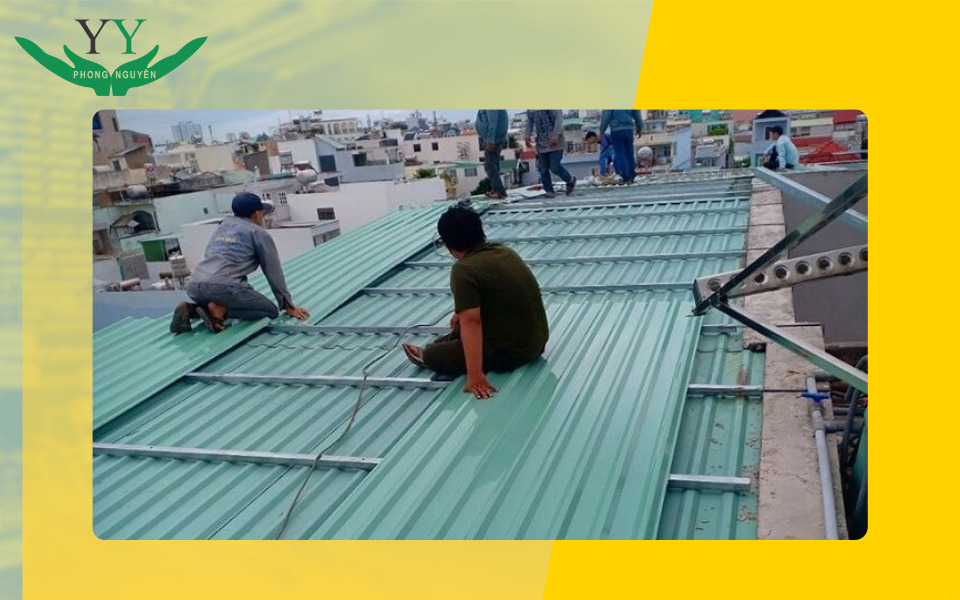
Step 3: Install the ridge and slope covers
Ridge caps, side flashings, gutters, and downspouts play a crucial role in protecting the roof from weather elements. The installation of square corrugated sheets not only seals the joints, creating a seamless roofing surface, but also effectively prevents water leakage during the rainy season.
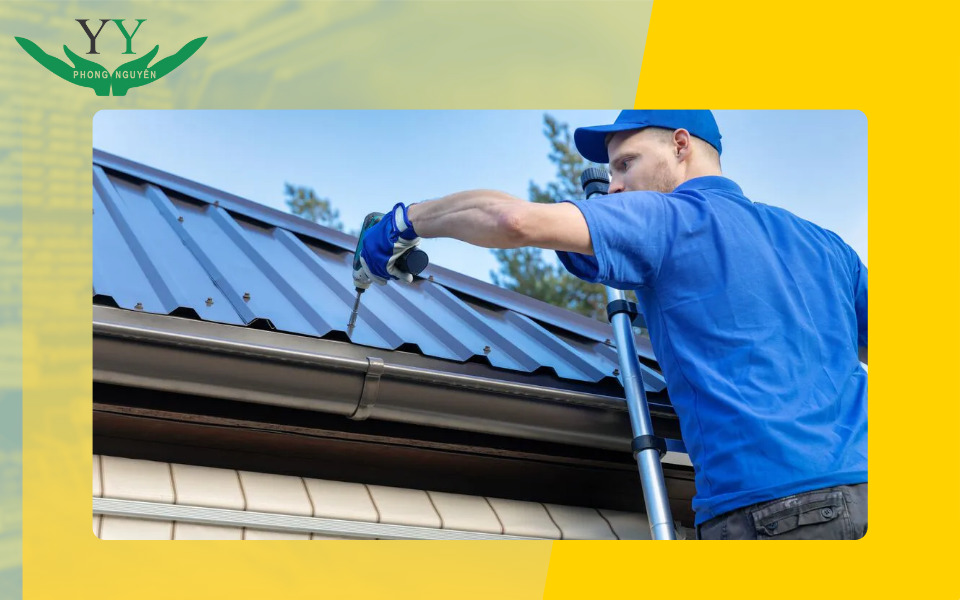
Proper installation of these covers ensures that the space below remains protected from water infiltration while also enhancing the roof’s durability and overall aesthetics.
Step 4: Complete the installation process
Once the square corrugated sheets are installed, the final step is to clean and inspect the entire roof. Cleaning any remaining metal shavings, sheet fragments, and nails not only keeps the appearance tidy but also prevents rusting and corrosion over time.
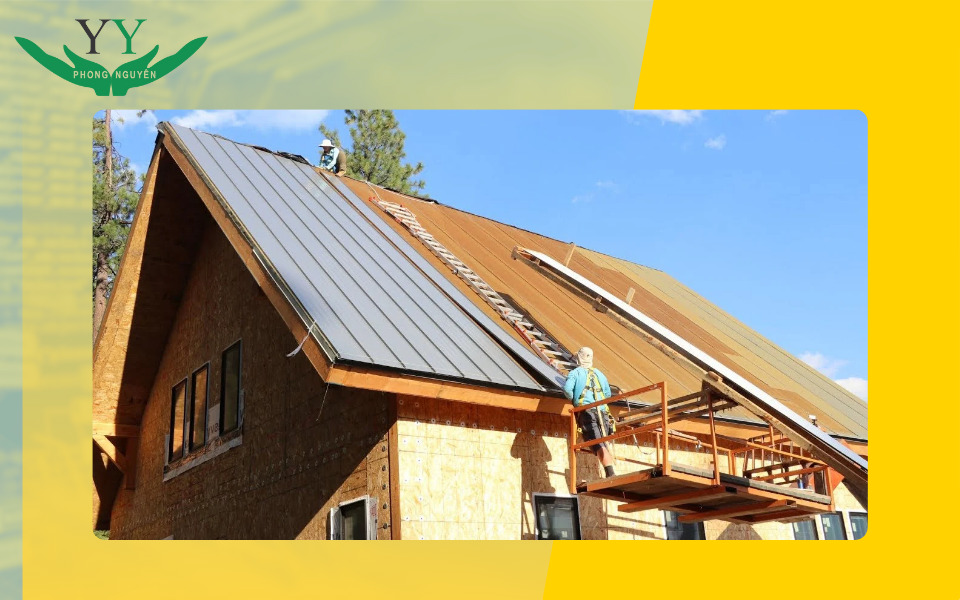
After cleaning, carefully inspect the roof, especially the joints, screw positions, and seams, to ensure that everything is tightly sealed and aligned according to technical standards. This step helps prevent leaks during heavy rainfall and enhances the longevity and effectiveness of the roof.
Conclusion
Installing square corrugated sheets is a crucial step in construction that requires skilled craftsmanship and careful attention to detail to ensure the quality and durability of the structure. With the clear and easy-to-follow instructions provided by Phong Nguyen, we hope you can complete the task safely, efficiently, and according to technical standards. Always prioritize safety and choose high-quality materials, as these are the foundation for ensuring the roof remains strong against harsh weather and maintains its aesthetic appeal over time.

